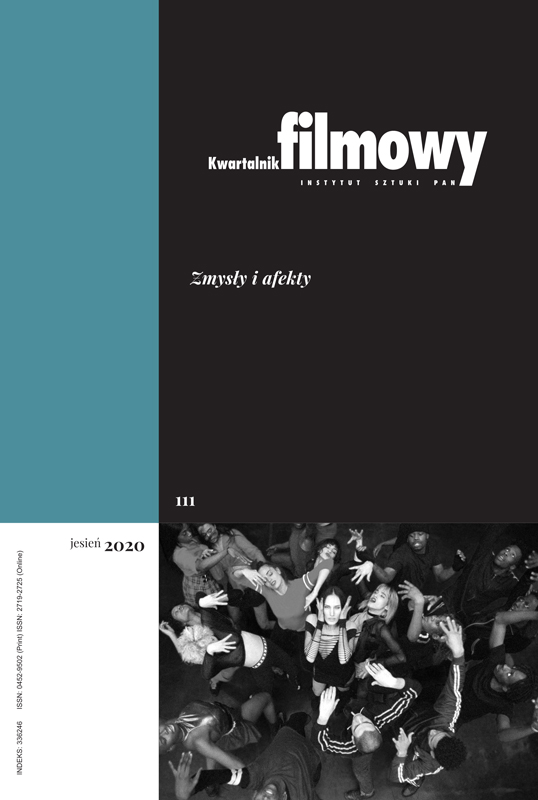Ucieleśniony odbiór tańca w filmie. Przypadek „Climaksu” Gaspara Noé
Embodied Reception of Dance in Film. The Case of „Climax” by Gaspar Noé
Author(s): Łukasz KiełpińskiSubject(s): Theatre, Dance, Performing Arts, Fine Arts / Performing Arts, Visual Arts, Film / Cinema / Cinematography
Published by: Instytut Sztuki Polskiej Akademii Nauk
Keywords: Gaspar Noé; embodiment; dance; affect; sensuous theory
Summary/Abstract: Dance shown on the cinema screen may make a stronger impression on the viewer than if it was watched live. Referring to "Climax" (2018) by Gaspar Noé, film critics wrote about the first dance scene using terms that suggest its highly intense, physiologically stimulating effect. The on-screen dance is intensified by the audio-visual setting of the film, which provokes a special kind of somatic engagement, manifested through sensations coming from the viewer’s body. Thus, sensuous theory seems to be a particularly adequate methodology for explaining phenomena of the embodied reception of film dance. Analyzing this phenomenon on the example of "Climax", the author uses the perspective of Vivian Sobchack’s sensuous theory, referring also to dance phenomenology, affect studies, performance theory and the discovery of mirror neurons. Towards the end of the text, psychoanalytic mechanisms of affective involvement in on-screen dance are also briefly indicated.
Journal: Kwartalnik Filmowy
- Issue Year: 2020
- Issue No: 111
- Page Range: 54-70
- Page Count: 17
- Language: Polish

